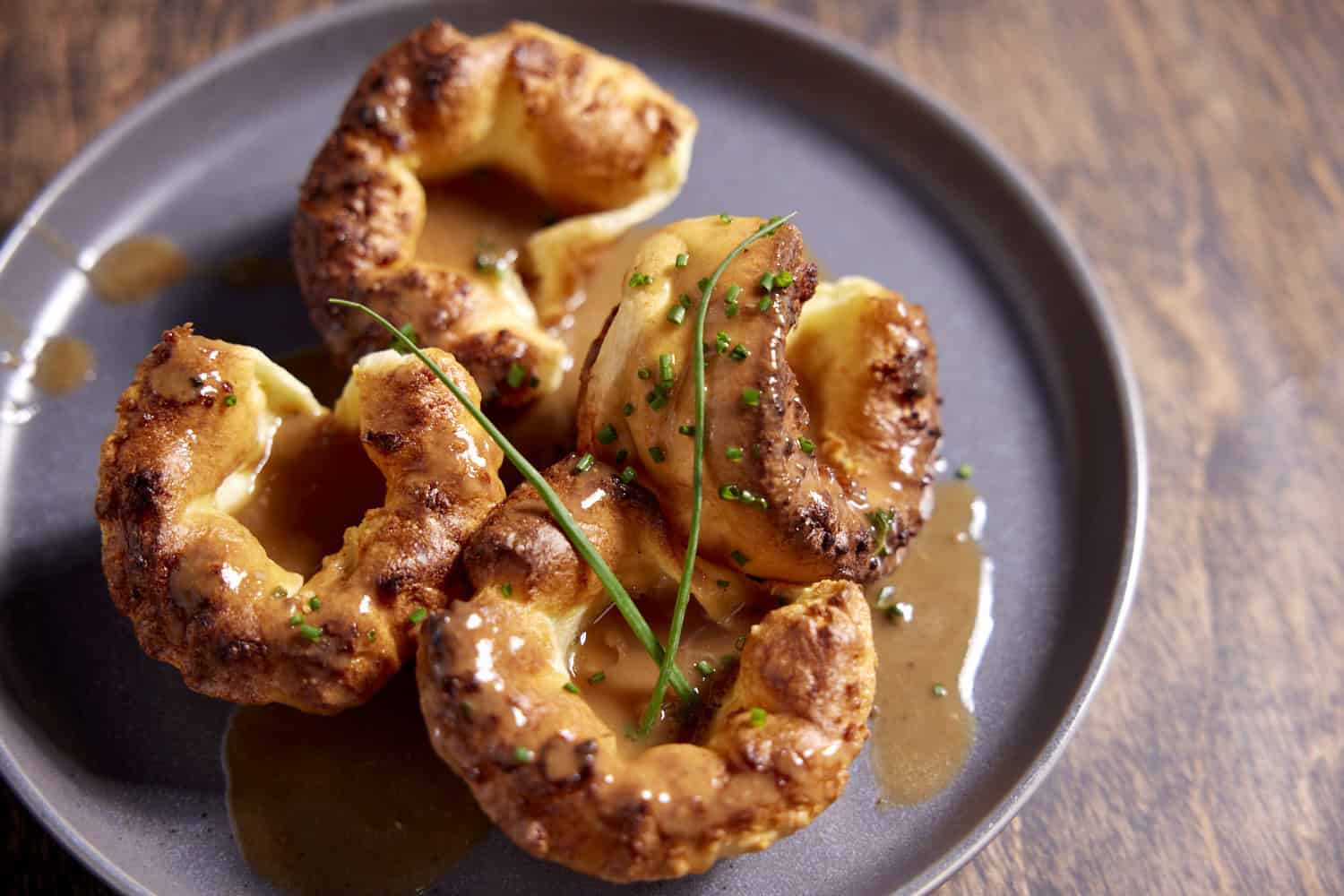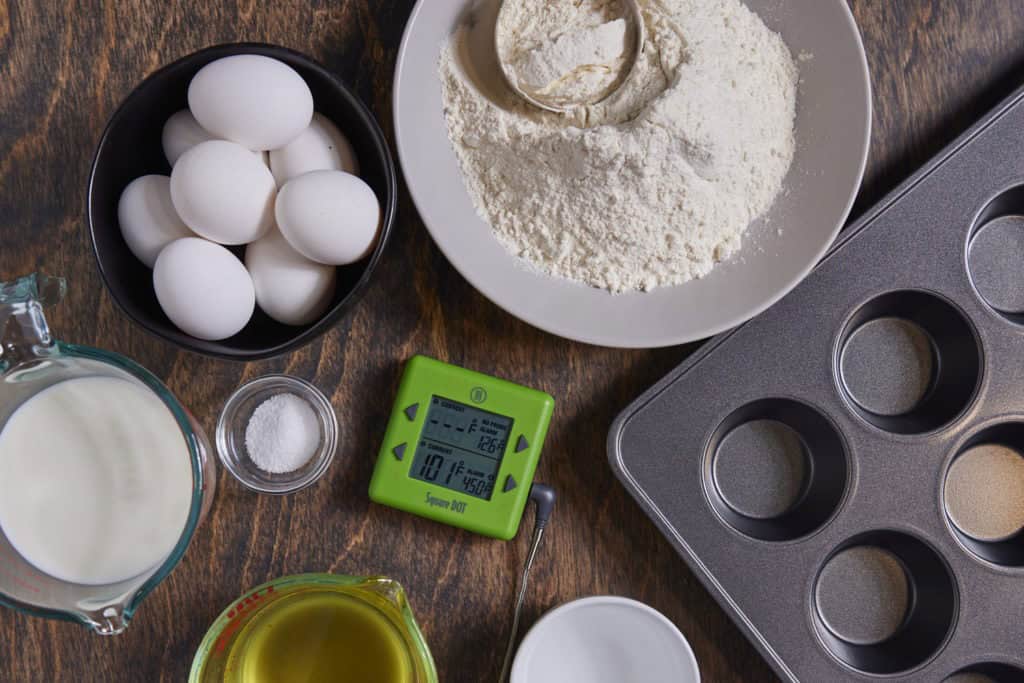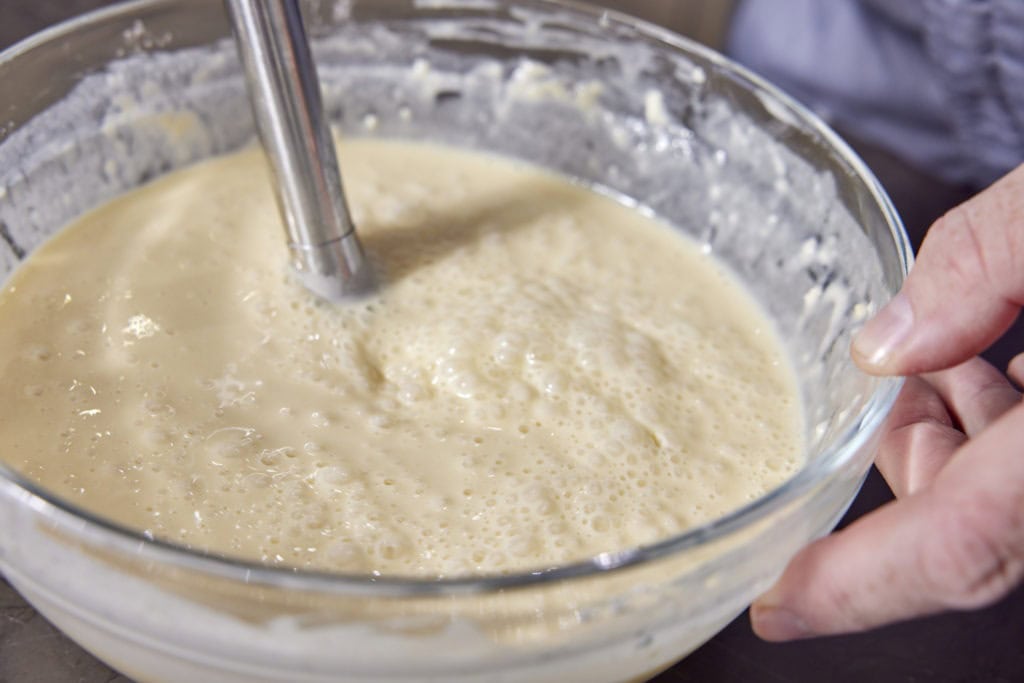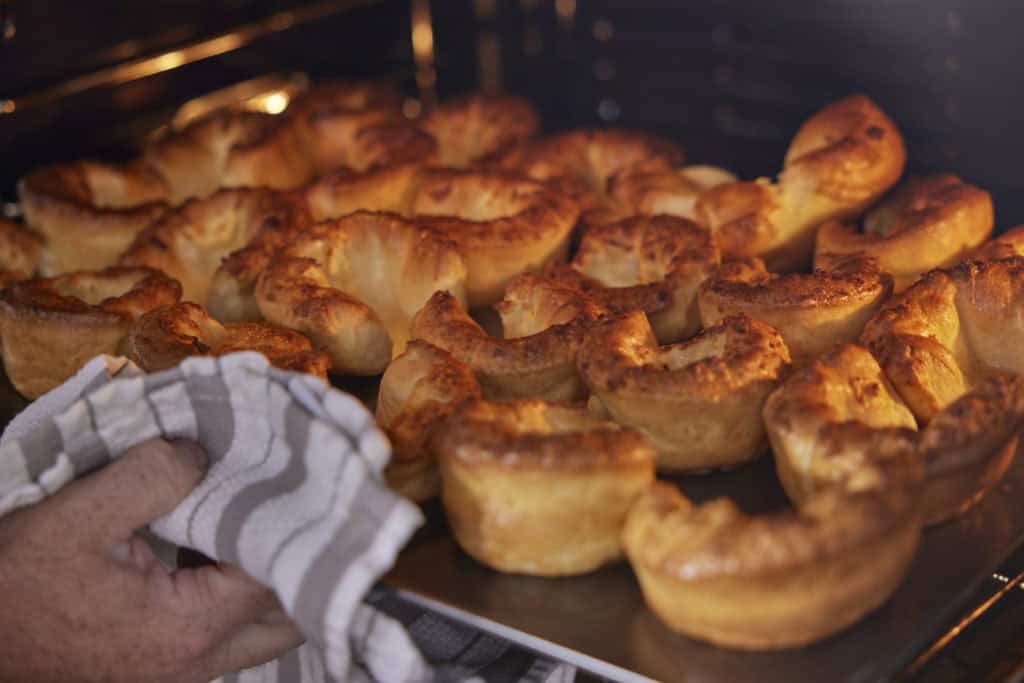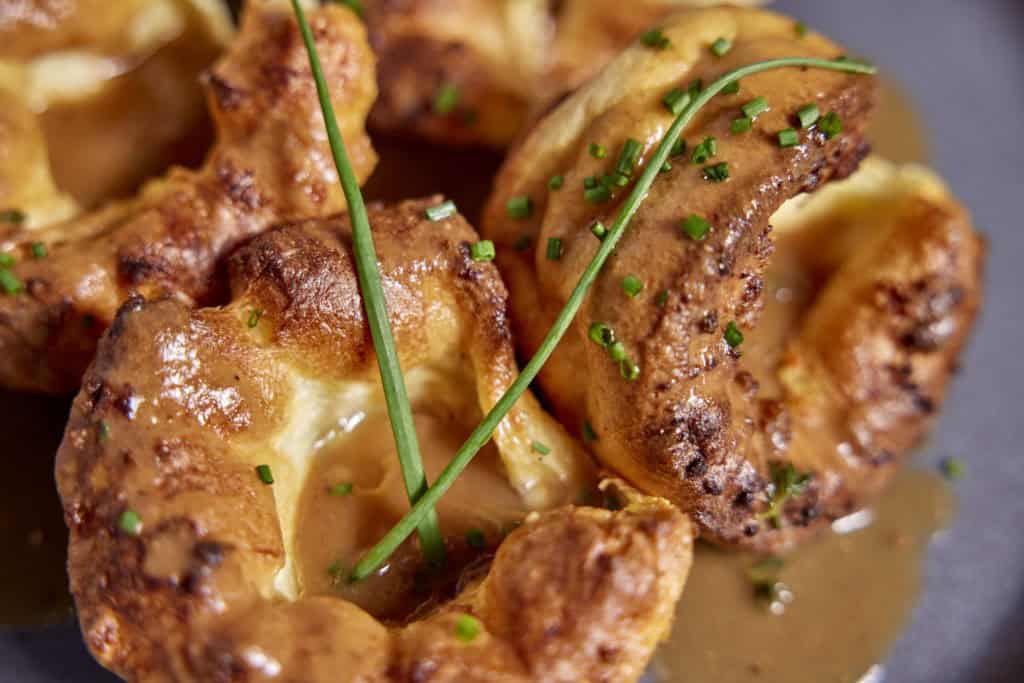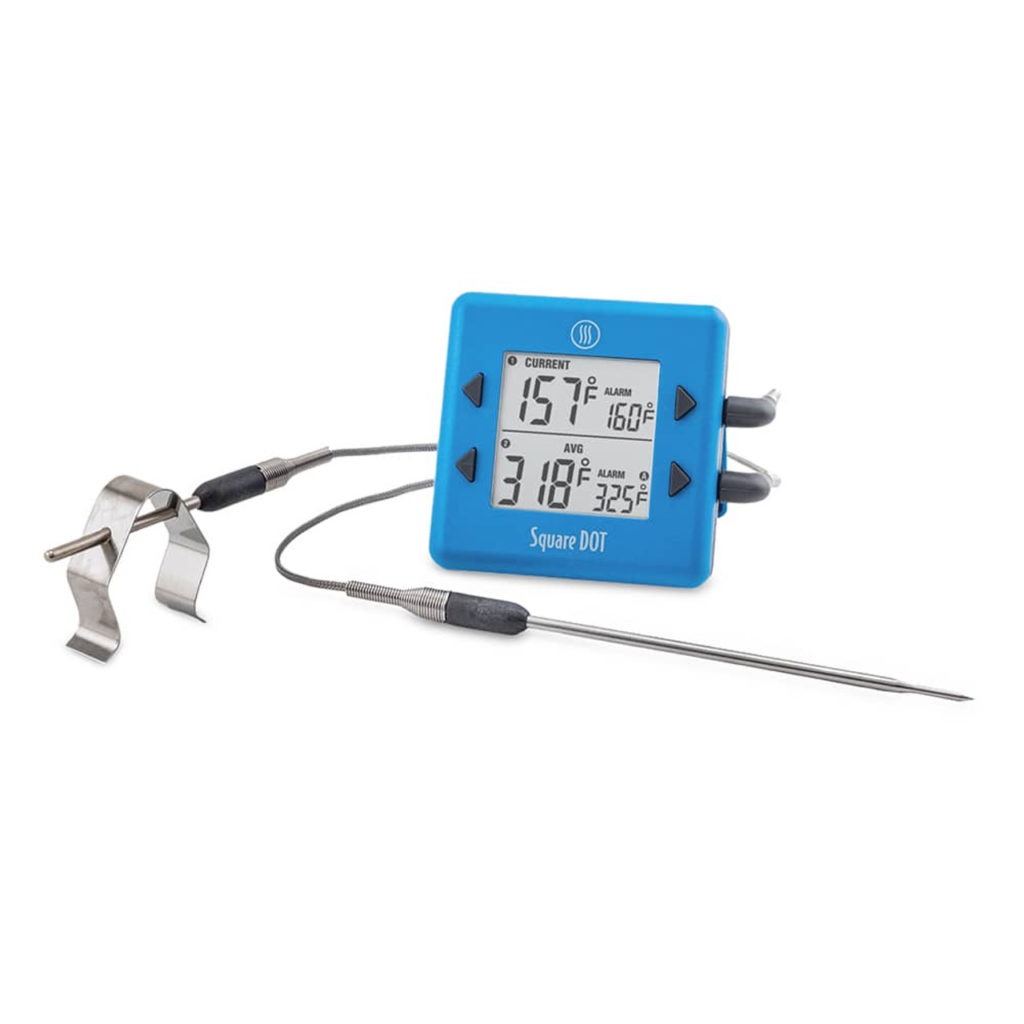Making Yorkshire Puddings: Making Sure Your Oven is Hot Enough
Yorkshire puddings are a food that we just don’t think of enough. This may not be 100% accurate, but it seems that most Americans who know (and therefore love) these puddings spent a lot of time in Great Britain or have close family there. And that just won’t do.
So, we’re bringing you a discussion on how to make Yorkshire puddings, and how to make them well. Temperature matters, of course, and we’ll talk about how to get your temps just right for this delicious dish. Read on and get hungry.
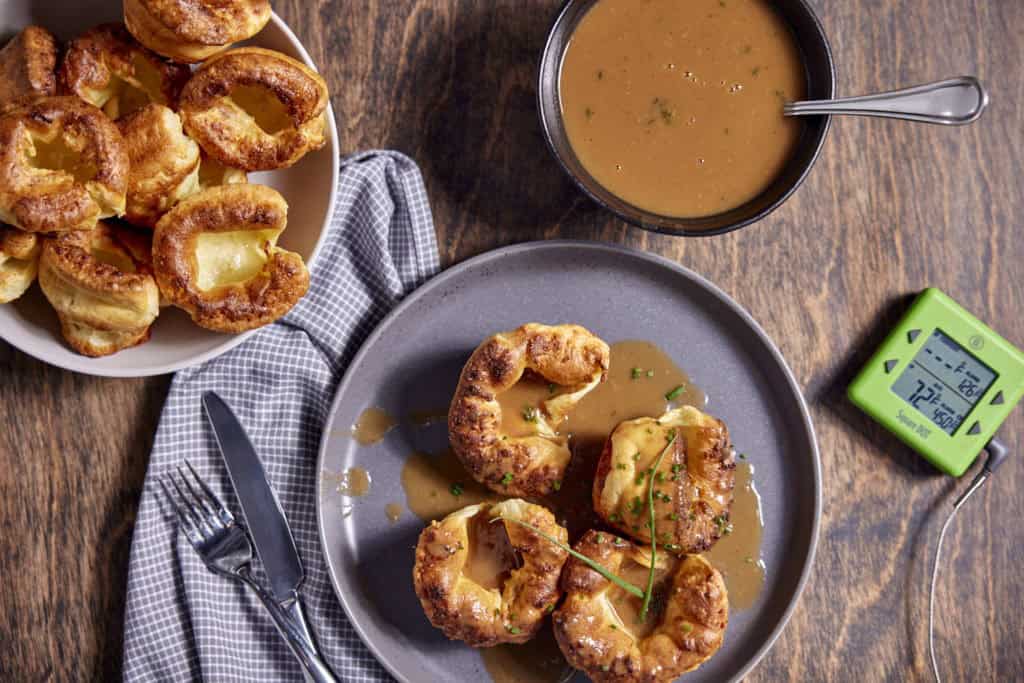
What are Yorkshire puddings?
And why are we asking what “they are” instead of what “it is”? From an American linguistic standpoint, it seems odd to have ‘puddings’ as a plural. After all, you’d almost never say there will be chocolate puddings after dinner. But this is a native British food, and they have a different (though original) definition of pudding there. What Americans think of as “pudding” is better defined as the narrower category “milk pudding.” It’s milk, sweetened, flavored, and thickened, usually with cornstarch or, sometimes, with eggs (which really makes it a custard). Pudding in the British sense can mean a whole score of things, none of which match our conception of it.
In this case, the name refers to individual-sized little puddings (hence the plural) that belong to the category of “batter puddings”, and within that category is a special case of “dripping puddings.” (Yorkshire pudding can be served as one large piece cut into slices, but we’re not making it that way today.) It is a thin batter made of milk, eggs, and flour that is cooked at high temperatures to create steam inside the batter that poofs it up. It is differentiated from popovers (and Dutch babies) by the fact that it is cooked with drippings from a roast or melted beef fat.
The supposed original idea behind Yorkshire puddings was that one would serve them with gravy before the meat was served during dinner. This would dull the keen edge of the appetite, making the more expensive roast (of beef, mutton, lamb) go further.
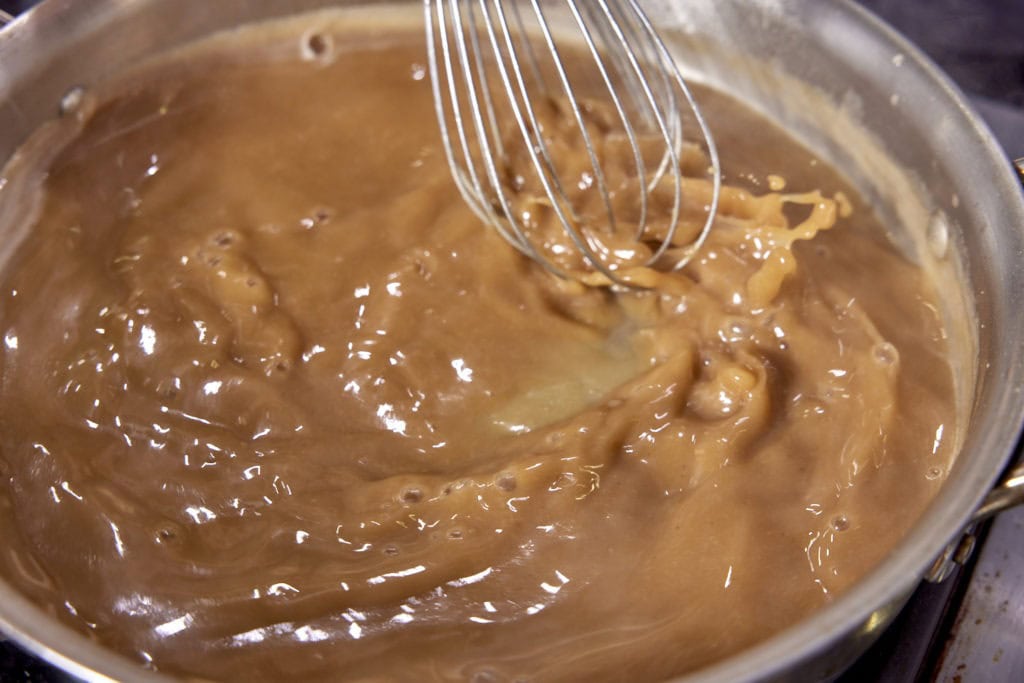
The science of Yorkshire pudding: heat matters
The best Yorkshire puddings are crisp on the exterior, tall, and deliciously browned. Being a member of the popover clan, they need to, well, pop up above the edge of the pan. For that to happen, we need hydration and heat.
Steam is the key operator here, and a batter in which the flour is well hydrated will have a better oven spring than one that has flour which has only been introduced to liquid, but not had time to soak it up. That’s why J. Kenji López-Alt recommends letting the batter sit in the fridge overnight before baking them. (We cooked one batch immediately and let another batch sit overnight, and the difference was unmistakable.)
Once your batter is fully hydrated, you need a hot oven—and a preheated hot pan—to cook them. How hot an oven? 450°F (232°C)! And for this cook, it’s important to be sure that temperature is actually reached. Checking oven temp is important, especially at high temps, because we don’t usually use our ovens at very high temps and they are often inaccurate when cranked that high. We recommend using Square DOT® for its oven-temp averaging feature to learn how far your oven is from its set temperature.
Check your oven
To do that, preheat your oven with the included air probe set up on a rack in the center of the oven. Set the target temp—in this case, 450°F (232°C)—as the alarm temperature for channel 2, then turn on the averaging function using the button on the back. When that alarm sounds, it means the oven has reached the target temperature. Let the thermometer work for 15 minutes and look at the average. If it says 475°F, you know to reduce the set temperature by 25°F. If it says 403°F, you know to increase the set temp by 47°F.
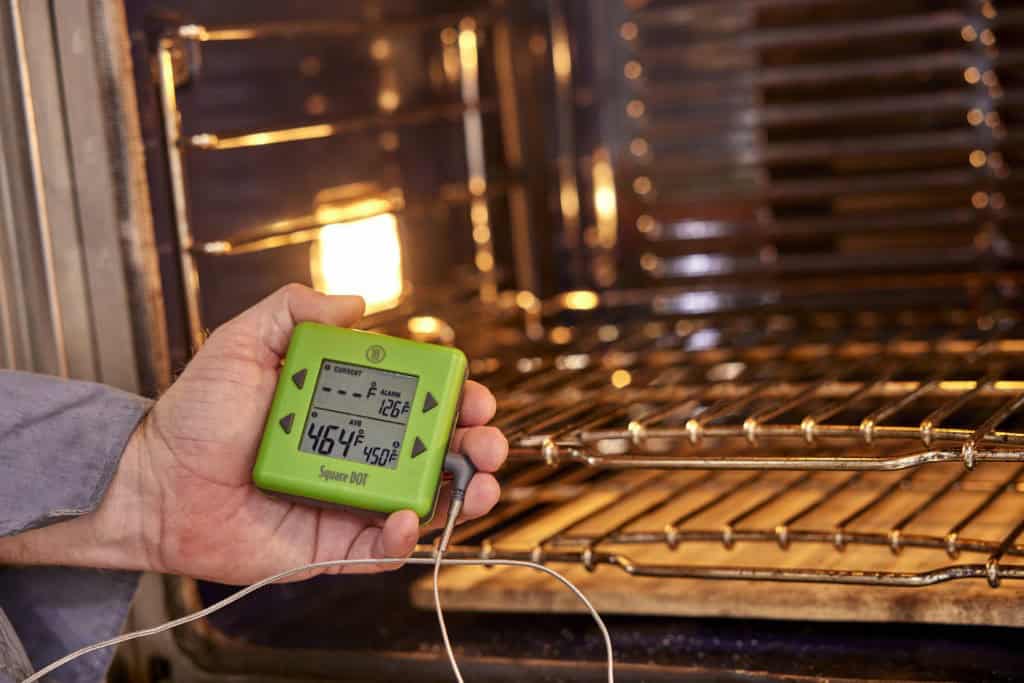
Preheat your pan
With your oven properly set, you can preheat the muffin pan, with its beef fat, before you add the aged batter. The beef fat should be just starting to smoke when you remove the pan from the oven and add the batter. That spitting-hot fat will start generating steam immediately, and it will also coat the puddings as they rise up in the pan, helping the edges to crisp and brown beautifully.
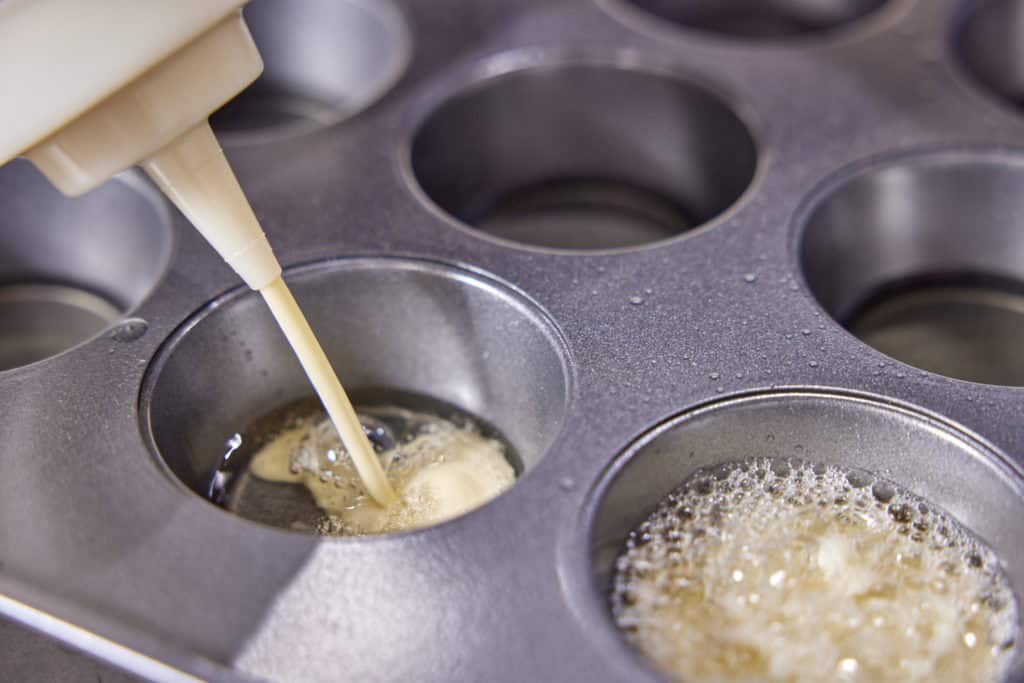
No roast needed: the case for puddings alone
Once you try these out, you’ll be wanting them all the time. But that doesn’t mean you need to be cooking a prime rib roast every weekend! On the contrary, these inexpensive, delicious puddings are standouts as a main course. They are rich, fun, and can be dressed up with savory gravy or sweet homemade jam. And as a weeknight dinner goes, they’re super easy to make, as long as you mix the batter up the night before.
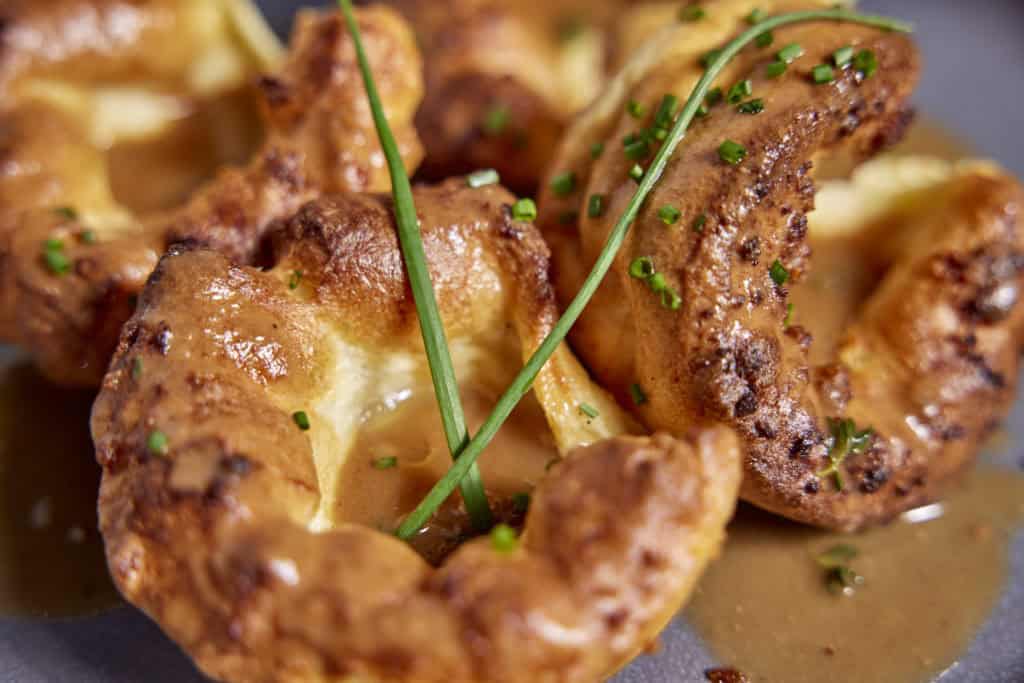
Give them a try, with or without a roast, soon, and we think you’ll be converted. Make sure you hydrate the batter and use your Square DOT to set your oven to the right actual temperature to cook, and you’ll be enjoying a certified British classic in your own home. Happy cooking!
Print
Making Yorkshire Puddings: Making Sure Your Oven is Hot Enough
Description
Individual Yorkshire puddings, adapted from SeriousEats.com
The recipe for gravy is just basic gravy making; you can use whatever gravy you like for it. Though this one is very good.
Ingredients
For the puddings:
- 6 large eggs
- 7.8 oz (about 1.5 C plus 1 Tbsp) all-purpose flour
- 9 fl oz whole milk
- 13/4 tsp kosher salt
- 7 1/2 tsp water
- ~3/4 C melted beef tallow (highly saturated fats like tallow will help your puddings crisp better and stay inflated longer)
For the gravy:
- 3 Tbsp butter
- 3 Tbsp all-purpose flour
- 1 qt good beef stock (homemade preferred)
- Salt and fresh-ground black pepper
- 1 Tbsp brandy
Chives, for serving
Instructions
The day before you cook:
- Whisk together the eggs, milk, water, salt, and flour for the puddings.
- To make sure the batter is extra smooth and well incorporated, use an immersion blender to mix the batter.
- Place the batter, covered, in your refrigerator overnight.
- Check your oven’s accuracy:
- Set up your Square DOT’s air probe in your oven using a grate clip or a balled-up piece of foil. Start preheating your oven to 450°F (232°C).
- Set your Square DOT’s averaging channel to 450°F (232°C) and allow the oven to come up to temp. (Make sure the averaging function is turned on.)
- When the alarm sounds, indicating that the temperature has been reached and averaging has begun, note the time. (This preheat time will probably be much longer than you expect. And the oven may say it is preheated before the probe does. Trust the probe, not the oven!
- 15 minutes later, look at the average displayed on the thermometer.
- Note the difference between the reading and your set temp. You can shut your oven down now. Tomorrow, when you preheat your oven, you can adjust the set temp to compensate for the difference.
On the day of your cook:
- Take the container of egg batter out of the refrigerator and start preheating the oven to the temperature you calculated using the offset from your Square DOT—450°F (232°C) if your oven was spot on, lower if it ran hot, higher if it ran cool.
- When the oven is properly heated, divide the tallow between the wells of a 24-well muffin tin (or use a 12-well muffin tin and work in two batches). Place the tin in the oven and preheat the fat until it is just starting to smoke. Remove the pan, carefully, from the oven.
- Divide the batter between the wells, filling them a little less than half-full. the batter should sizzle in the fat. (You may have a little extra batter.)
- Place the filled pan back in the oven and cook for about 25 minutes.
- Make the gravy:
- Put the stock in a small saucepan and heat it over medium-high heat until just simmering.
- Meanwhile, make a roux by melting the butter in a wide sauté pan and whisking in the flour, then cooking it over medium heat until just turning blonde.
- Carefully pour and whisk the stock into the roux and return to a simmer. Season with salt, pepper, and the brandy. Bring to a brief boil, then keep warm on the stove.
- When the puddings have risen (high) and are brown and crisp on the edges, remove them from the oven.
- Serve the puddings with the gravy, garnished with chopped chives.
- Make another batch of batter for tomorrow! (Well, you’ll want to, anyhow.)
Shop now for products used in this post:


